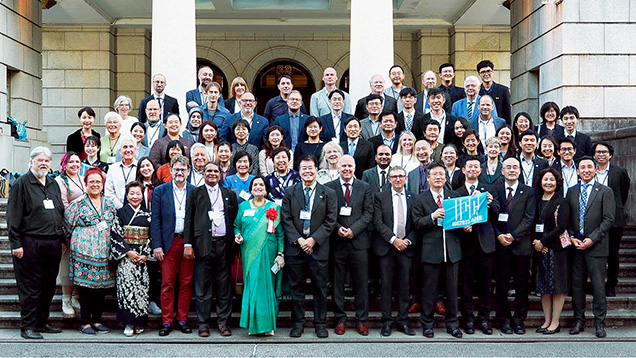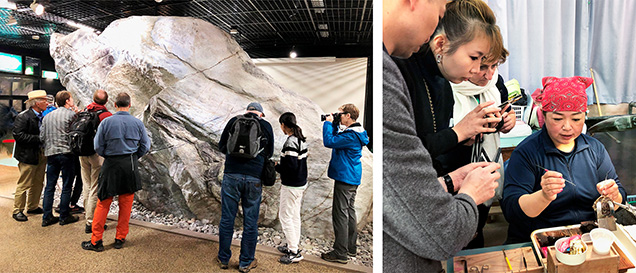37th International Gemmological Conference

The 37th International Gemmological Conference (IGC) was held October 23–27 in Tokyo, with more than 80 delegates, observers, and special guests from 24 countries attending (figure 1). The IGC, which started in 1951 and takes place every two years, brings together international gemologists, scholars, and researchers to present their work on natural and synthetic diamonds, colored gemstones, pearls, gem treatments, geological and geographical study of gem deposits, and more. This year, IGC delegates had the opportunity to meet with researchers from various earth science disciplines as well as Japanese laboratory gemologists and gem traders at specially organized events.
The opening ceremony began with a welcome from the Japan Jewellery Association, the Japan Gem Society, the Gemmological Society of Japan, and the IGC. Six keynote presentations followed. IGC executive secretary Dr. Jayshree Panjikar discussed the past, present, and future of the conference, beginning with its formation, followed by advancements in gemological science and the latest developments in instrumentation. Dr. Panjikar announced the IGC’s goal of recruiting more young gemologists and scientists by its 100th anniversary in 2052, bringing greater knowledge to the general public and consumers. Professor Hisao Kanda (National Institute for Materials Science, Japan) described the activities of Japanese researchers from 1980 to 2000, particularly in the area of diamond synthesis. Dr. Hanco Zwaan (Netherlands Gem Laboratory/Naturalis Biodiversity Center, Leiden) discussed the differences between natural and laboratory-grown diamond in terms of growth history and conditions and properties. Yuichi Nakamura (Mie Prefecture Pearl Promotion Council) reviewed the status quo of the akoya pearl industry and initiatives for sustainable pearl cultivation in Japan. Professor Pornsawat Watanakul (Kasetsart University) emphasized the importance of research for the gem and jewelry industry, noting examples of in-depth research and advanced technology that are yielding applicable knowledge. Dr. Michael Krzemnicki (Swiss Gemmological Institute SSEF) addressed the issue of classifying colored gems into their respective varieties and presented a number of case studies to illustrate the topic from a gemological laboratory perspective.
At the main conference venue, the National Museum of Nature and Science, participants attended oral and poster presentations, along with the IGC exhibition booth and a demonstration booth showcasing recent advances. Many high-quality scientific talks were presented by IGC members, and some of the presenters were elected as new delegates. Abstracts of the 48 presentations covering topics ranging from diamonds and colored stones to technology and techniques can be viewed on the conference website at www.igc-gemmology.org/s/IGC2023_webfinal.pdf.

In addition to the academic program, the IGC Japan committee organized pre-conference and post-conference excursions (figure 2). Before the conference, 32 participants visited the jadeite gorge in the Itoigawa region of Niigata Prefecture and learned about its geological setting and formation and observed the jadeite deposit’s location in serpentinite lenses within a high-pressure metamorphosed complex. After the conference, 25 participants visited the akoya cultured pearl farm at Ago Bay, where they witnessed the bead implantation process and pearl harvesting. In addition to these conference excursions, a tour of Mount Fuji and a visit to the jewelry city of Kofu were organized.



